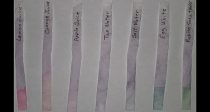This activity was created exclusively for STEAMfest by Shannon Blakely a Woodlawn parent.
When my daughter was young, she received a science kit as a gift. The kit included red cabbage powder, acidic acid, and baking soda used for observing pH change. She learned adding an acid to the purple colored, red cabbage, pH indicator produced one color, while adding a base produced another color. One evening while steaming red cabbage, I collected the purple juice left behind and let her play with it. She repeated the procedures she had learned from the science kit and tried to identify acids and bases in our kitchen by observing the color change of the cabbage juice. Once she found something that turned the purple juice to an acid or a base, she also enjoyed trying to pH it back in the other direction (from more acidic to more basic and from more basic to more acidic).
Possible items that could be used for testing (the Internet is a useful tool for suggestions as well):
- Apple
- Orange
- Tomato
- Potato
- Garlic
- Soybeans
- Other fruits or vegetables
- Egg white
- Egg yolk (yes, they have different pH’s)
- Nut/Seed butters
- Soda
- Bicarbonate
- Salt
- Sugar
- Dish soap
- Toothpaste
- Alka Seltzer
Handy items useful for prepping foods:
- Garlic press for pressing out juices
- Potato peeler
- Water for dissolving items
Note, if you have left over cabbage or cabbage juice, in pH’ing in the Kitchen, part 2, I show you how to make pH test strips from coffee filters.
- Did you steam, boil, or use a blender to make red cabbage juice for your pH indicator? If you have a picture from your own experiments with your homemade pH indicator or a picture of your completed downloadable worksheet, please share. We’d love to see your results!
- How may items did you test with with your pH indicator? Did you have a favorite item that you tested and was it an acid or a base?
- Did you find something you thought was an acid, but turned out to be a base? Or a base, that you thought would have been an acid? You may have found something that didn’t seem to change at all or you couldn’t tell if there was a change. If you found a substance like that, what was it?
Earn badges and qualify for prize drawing by registering and answering journal questions. It's fun and easy!


